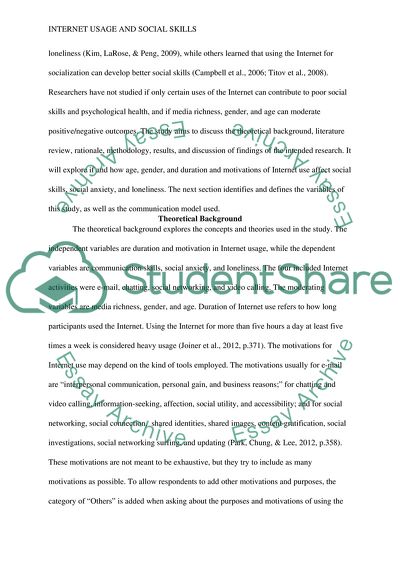Cite this document
(Do Duration and Motivations of Internet Use Improve Social Skills Literature review Example | Topics and Well Written Essays - 3250 words, n.d.)
Do Duration and Motivations of Internet Use Improve Social Skills Literature review Example | Topics and Well Written Essays - 3250 words. https://studentshare.org/journalism-communication/1819817-literature-reviewmethodology-paper-assignment
Do Duration and Motivations of Internet Use Improve Social Skills Literature review Example | Topics and Well Written Essays - 3250 words. https://studentshare.org/journalism-communication/1819817-literature-reviewmethodology-paper-assignment
(Do Duration and Motivations of Internet Use Improve Social Skills Literature Review Example | Topics and Well Written Essays - 3250 Words)
Do Duration and Motivations of Internet Use Improve Social Skills Literature Review Example | Topics and Well Written Essays - 3250 Words. https://studentshare.org/journalism-communication/1819817-literature-reviewmethodology-paper-assignment.
Do Duration and Motivations of Internet Use Improve Social Skills Literature Review Example | Topics and Well Written Essays - 3250 Words. https://studentshare.org/journalism-communication/1819817-literature-reviewmethodology-paper-assignment.
“Do Duration and Motivations of Internet Use Improve Social Skills Literature Review Example | Topics and Well Written Essays - 3250 Words”. https://studentshare.org/journalism-communication/1819817-literature-reviewmethodology-paper-assignment.


